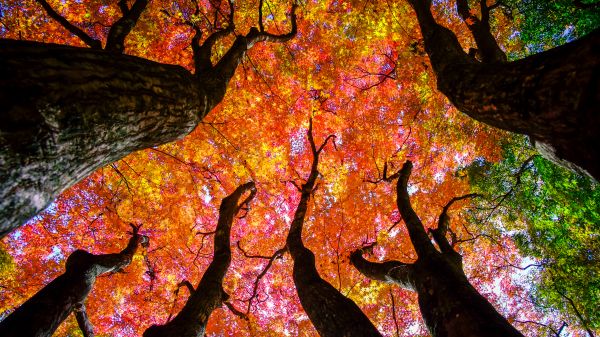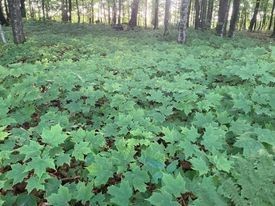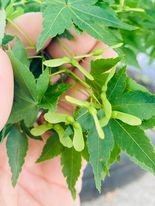Maple Trees: A Perspective

Guest blog post written by Jeremy Solin, who is an abiding NAAEE member and has contributed before to eePRO. You can contact Jeremy at solinssyrup@gmail.com or at Tapped Maple Syrup.

Colorful maple tree in the Solin Family Sugarbush. Photo credit: Jeremy Solin

Sugar maple seedlings in the understory of sugarbush forest. Photo credit: Jeremy Solin

Sugar maple seeds. Photo credit: Jeremy Solin
One of the amazing things about maple forests is that all the trees are connected together through their roots and fungi. This network allows the trees to communicate with each other as well as to share food/energy. These forests invest significantly in building this network with the most valuable assets they have, sugar and nutrients.
This network actually allows maple seedlings to stay in the understory of the forest for decades. Because of the shade of the mature trees, the seedlings don't get enough sunshine to make enough of their own food. However, the mature trees share some of the sugar they make with the seedlings, keeping them alive until an opening occurs in the forest (because one of the mature trees dies) and enough sunlight reaches the forest floor for the young trees to make their own food and start to grow.
Walking through a maple forest reminds us that we need to take care of each other. And, maple forests are the inspiration for Tapped's community involvement—supporting Central Rivers Farmshed and many other community organizations.
